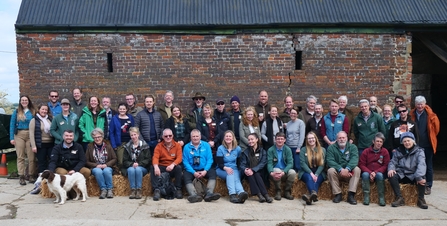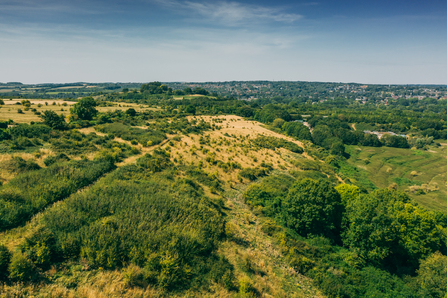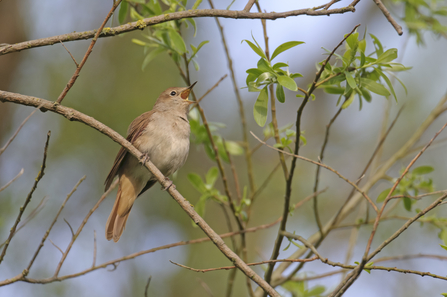Focus on the target
We are now six years away from 2030. This is the date, according to the UK Government, by which the decline in species abundance will have halted and 30% of land and sea will have been protected for nature’s recovery.
It’s important to say these are far from arbitrary targets that can be changed at whim by whoever is next in power. These are not goal posts that can be easily shifted. There is a weighty scientific consensus that 30% of the planet is the minimum space required to ensure that wildlife is able to survive and thrive. This is now an international commitment, signed up to by 188 countries under the Global Biodiversity Framework. The urgency of getting there by 2030 betrays just how close we have come to an irreversible tipping point.
At the Trust, we were one of the first organisations in the UK to set out this ‘30 by 30’ ambition in our Wilder 2030 strategy published in late 2019. Back then, we had a nice round decade to achieve this goal.
In the past four years, not only have all Wildlife Trusts and environmental NGOs adopted this as a core strategic aim, but from a policy perspective we have seen significant progress on paper – we have an Environment Act, an Environment Improvement Plan, and a whole raft of commitments and targets (some more ambitious than others).
But sadly, the reality on the ground across the UK and in our two counties hasn’t changed at the pace needed if we are going to stay on track.
Some might look at the space designated or protected for nature in Hampshire and on the Island and think we don’t have far to go – but it’s vital to understand that while we are fortunate to have designated landscapes like the national parks – this doesn’t, sadly, mean that they are good for wildlife or where nature is recovering. and less than 50% of our SSSIs are in favourable condition. None of our chalk streams or rivers are in good overall health. There is a lot more to be done.
We estimate that on top of improving existing protected areas so they are in good condition, we would need to secure another 60,000 hectares for nature across Hampshire and on the Island to reach 30%. Using the universal relatable measure – that’s 84,000 football pitches!
When we published Wilder 2030, we set out our aim to double the amount of space the Trust actively manages for nature and as part of this to acquire 1,000 hectares between 2020 and 2030. We have been making strides towards that total, acquiring several new sites, totalling more than 300 hectares since 2020. We have pioneered new programmes, like the Nutrient Reduction Scheme, which have unlocked new sources of funding to enable us to rewild at scale.
We also set a goal to support and inspire landowners to make an additional 5,000 hectares of space wilder. Again, our progress against this target has been positive and we are working alongside more and more enlightened partners, who are radically shifting the way they manage their land. The launch of the Hampshire and Isle of Wight Rewilding Network last year demonstrated the real appetite from individuals to do more.
But, while there are steps that we should celebrate, this all leaves a lot of space that we still need to secure for nature and the clock is ticking.
The picture is the same across the UK. When the State of Nature report was published in 2023 it revealed that wildlife was faring worse than it had in 2019 – with 1 in 6 species at risk of extinction (up from 1 in 7). A recent report from the Office for Environmental Protection (OEP) stated that the Government was securely on track to meet just 4 out of 40 legally binding environmental targets.




